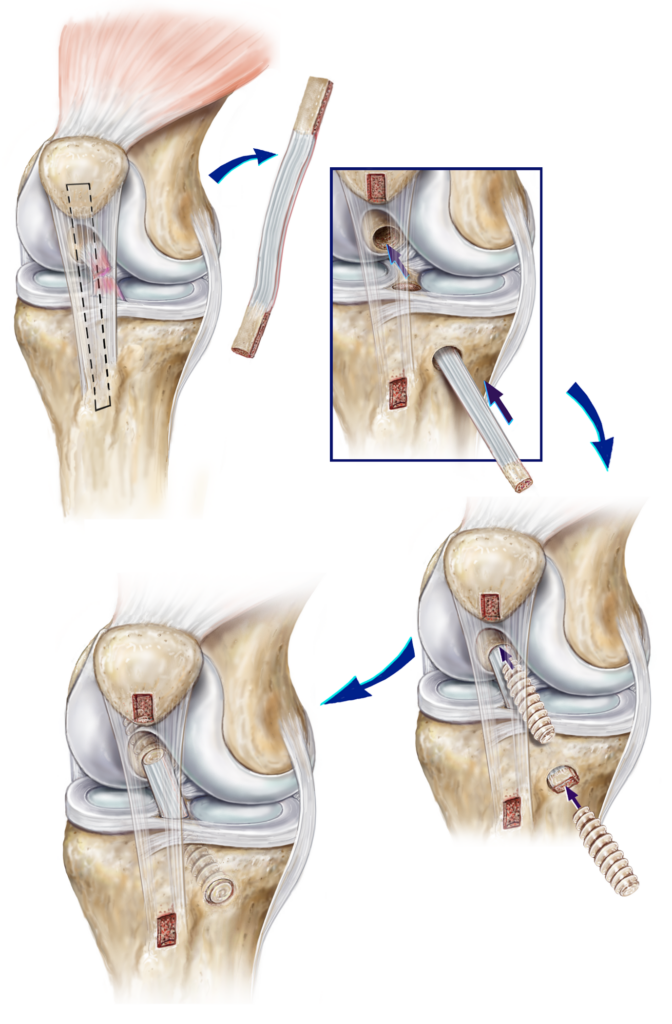
Anterior cruciate ligament (ACL) injuries are one of the most common knee injuries. ACL injuries can be sprains, partial tears or complete tears. An ACL tear often happens when playing sports, but you don’t have to be an athlete to damage your ACL.
Around 1 in every 3,500 people in the U.S. will experience ACL injuries this year. However, some people recover from ACL injuries with a more conservative approach. Summit Orthopedics offers residents of the Minneapolis / St. Paul area a personalized approach to treating ACL tears or sprains, so you can get back to the activities you
What Is the ACL
Your knee joint has four main ligaments that connect your thigh bone (femur) to your shin bone (tibia). Ligaments are strong, flexible tissue that connect bones throughout your body. Your knee contains:
- Anterior cruc
iate ligament (ACL), in the middle of your knee - Med
ial collateral ligament (MCL), on the inner side of your knee - Lateral collateral ligament (LCL), on the outer side of your knee
- Posterior cruc
iate ligament (PCL), behind the ACL in the middle of your knee.
The ACL helps stabilize the knee and keep your shin in place relative to your thigh.
How Do ACL Tears Happen?
Many types of activities can lead to ACL injuries. Common causes of ACL tears and sprains include:
- Being hit on the side of your knee
- Landing after a jump and twisting your knee
- Overextending your knee
- Quickly changing direction while running or moving
- Stopping running suddenly
ACL injuries are very common in sports such as basketball, football, skiing, soccer and tennis. Although collisions can cause tears, sudden pivots or other changes in motion and direction are more often the cause. Women are more likely to develop ACL tears than men, possibly due to slightly different anatomy.
Signs of an ACL Tear
If your ACL is torn, you will definitely know something is wrong with your knee. Many people will feel their knee give out, and some people may hear a popping sound. Other symptoms of an ACL injury include:
- Difficulty walking or standing
- Feeling like your knee is unstable
- Loss of range of motion
- Pain
- Swelling
Even if your pain and swelling improve after a day, with an ACL tear, your knee will still feel unstable or as if it could give out when you walk or run. If you continue to play sports or exercise on your damaged knee, it can worsen the injury.
How is an ACL tear diagnosed?
If you suspect an ACL injury it is important to get proper diagnosis before resuming intense physical activity. ACL injuries often occur in tandem with injuries to other ligaments and the cartilage in your knees (the menisci). A Summit Orthopedics sports medicine specialist has the experience you need for an accurate diagnosis of the injury. The process of diagnosing the injury may include:
- A physical exam to look at your injured knee and test the strength of your ligaments
- MRI, to d
iagnosis any damage to other tissues in your knee - X-ray, to see if your kneecap or other bones are fractured

Treatment for an ACL Tear
Treatment for an ACL injury will depend on whether you have a mild ligament sprain, a partial ACL tear or a complete ACL tear. Treatment may also depend on your age, your overall fitness and your athletic goals.
If you have a mild-to-moderate ACL injury, nonsurgical treatment may be a good option and could include:
- Icing and resting your knee
- Physical therapy
- Taking anti
–inflammatory medications for pain - Using crutches to reduce weight on the knee
- Wearing a knee brace for added strength and protection
Physical therapy can help many people regain mobility and strength in their injured joints. However, some patients may have persistent instability or regularly experience feeling their knee giving out if they opt for non-surgical treatment. Some people, especially children, may also be at an increased risk of developing further knee injuries. Complete ACL tears are much harder to recover from without surgery. ACL reconstruction surgery involves grafting a tendon to replace the torn ligament. Tissue can be taken from the patient’s own hamstring tendons in the thigh, a central portion of the patellar tendon in the knee, the central portion of the quadriceps tendon, or from a donor. This is a minimally invasive arthroscopic procedure. If needed, repairs to the meniscus will also be made.
Recovery After ACL Surgery
Recovering from an ACL tear will take 9-12 months. Patients who opt for surgery may need physical therapy prior to surgery for best results. After you have reconstructive surgery, you will be on crutches and may wear a leg brace. You will need intensive physical therapy throughout this period to restore your strength and build your strength and restore your range of motion.
If you have symptoms of a possible ACL tear, or any other injury, trust Summit Orthopedics for diagnosis and treatment. Find a location near you.
